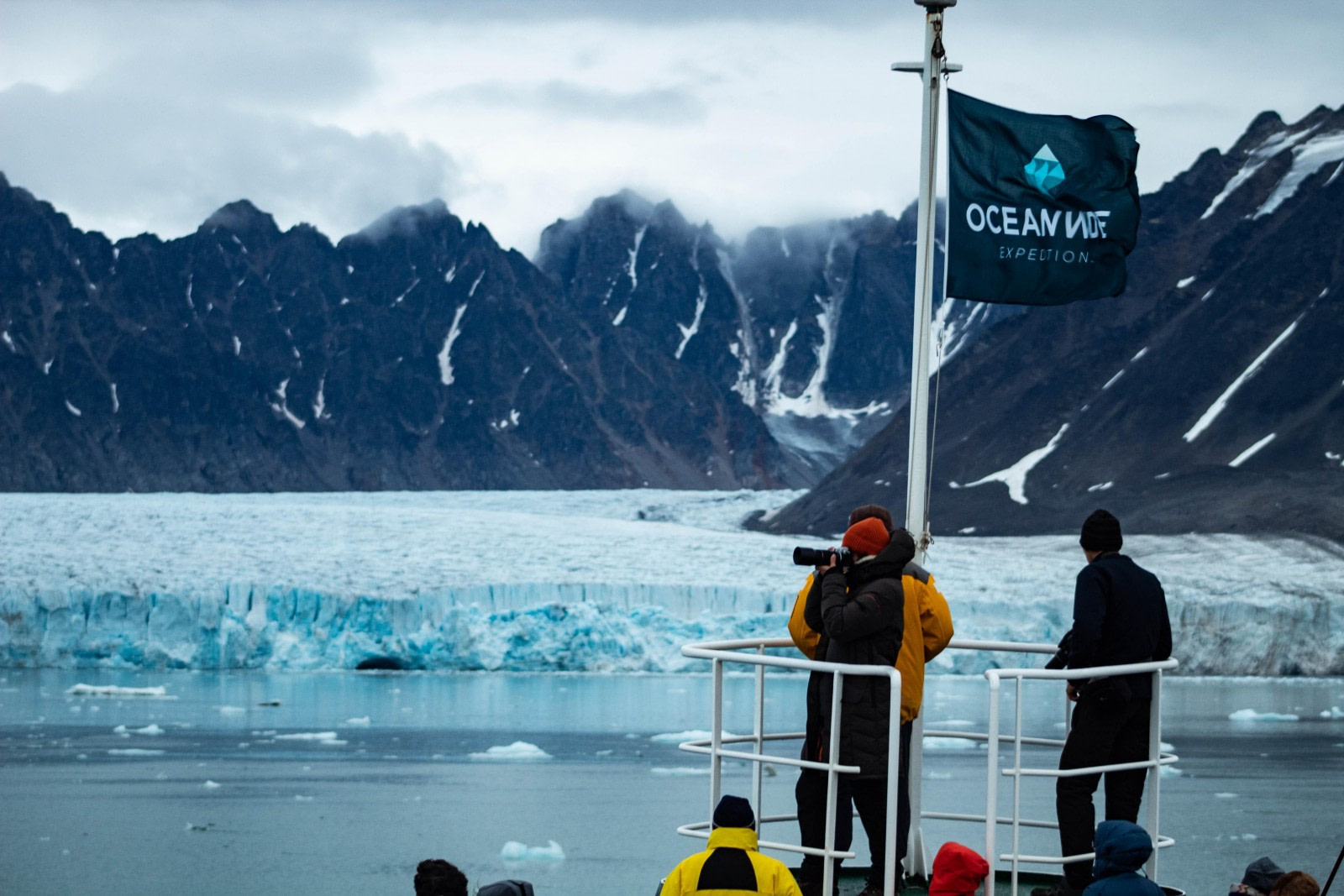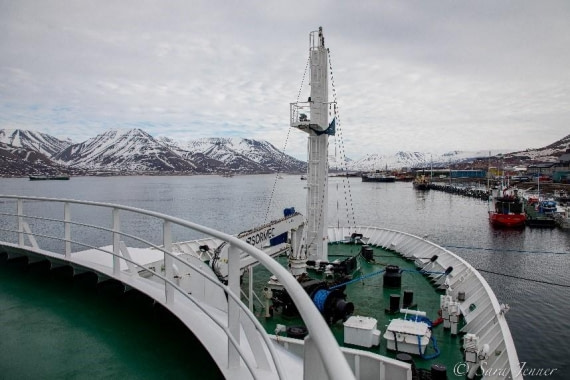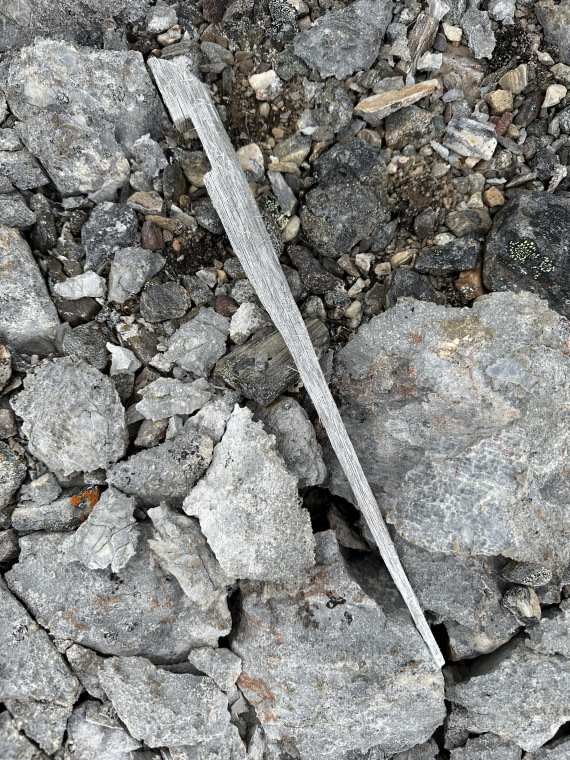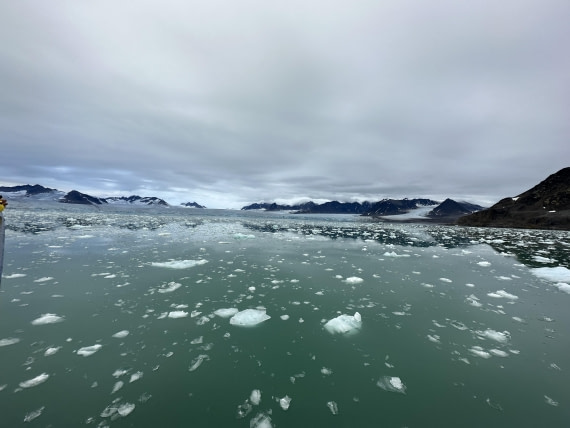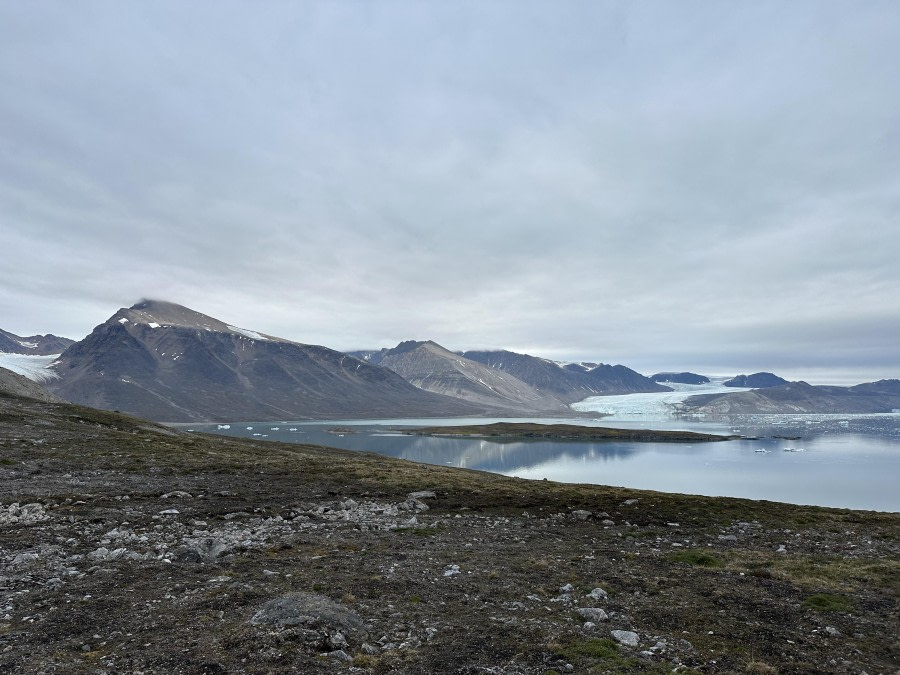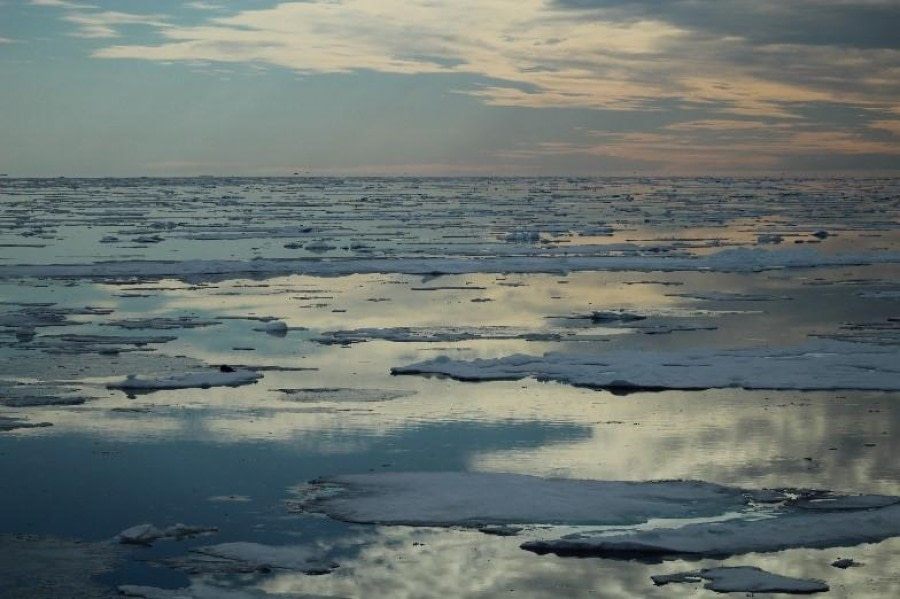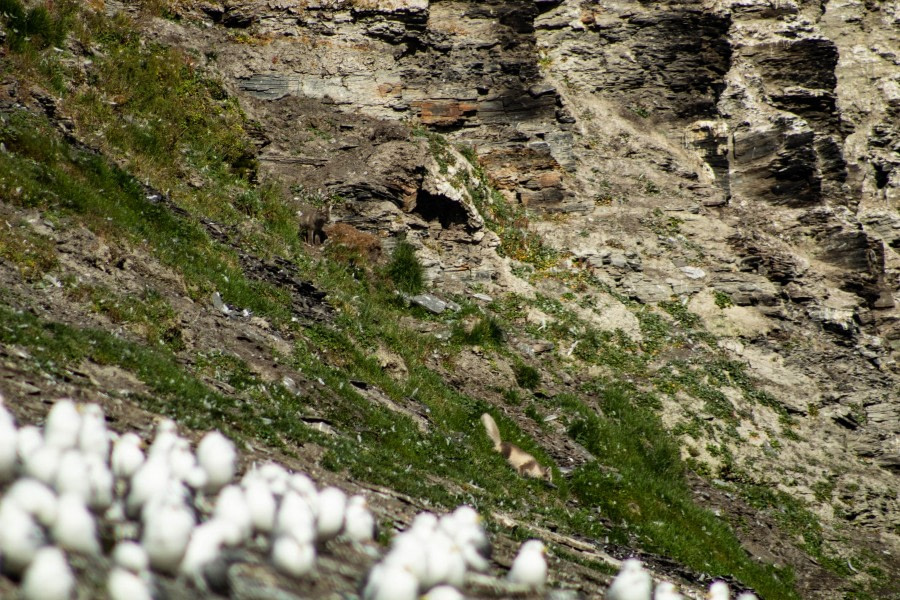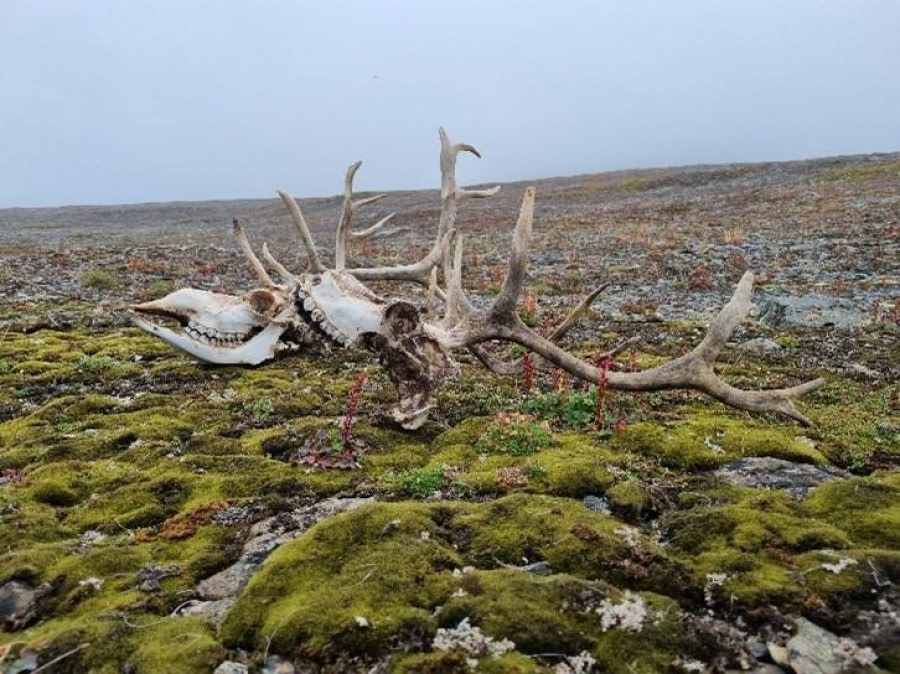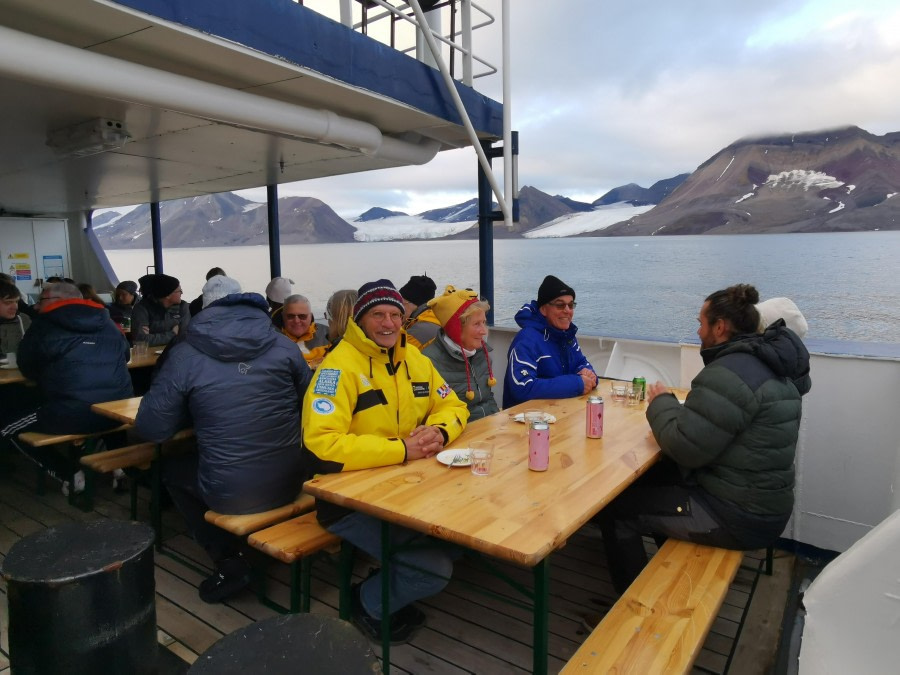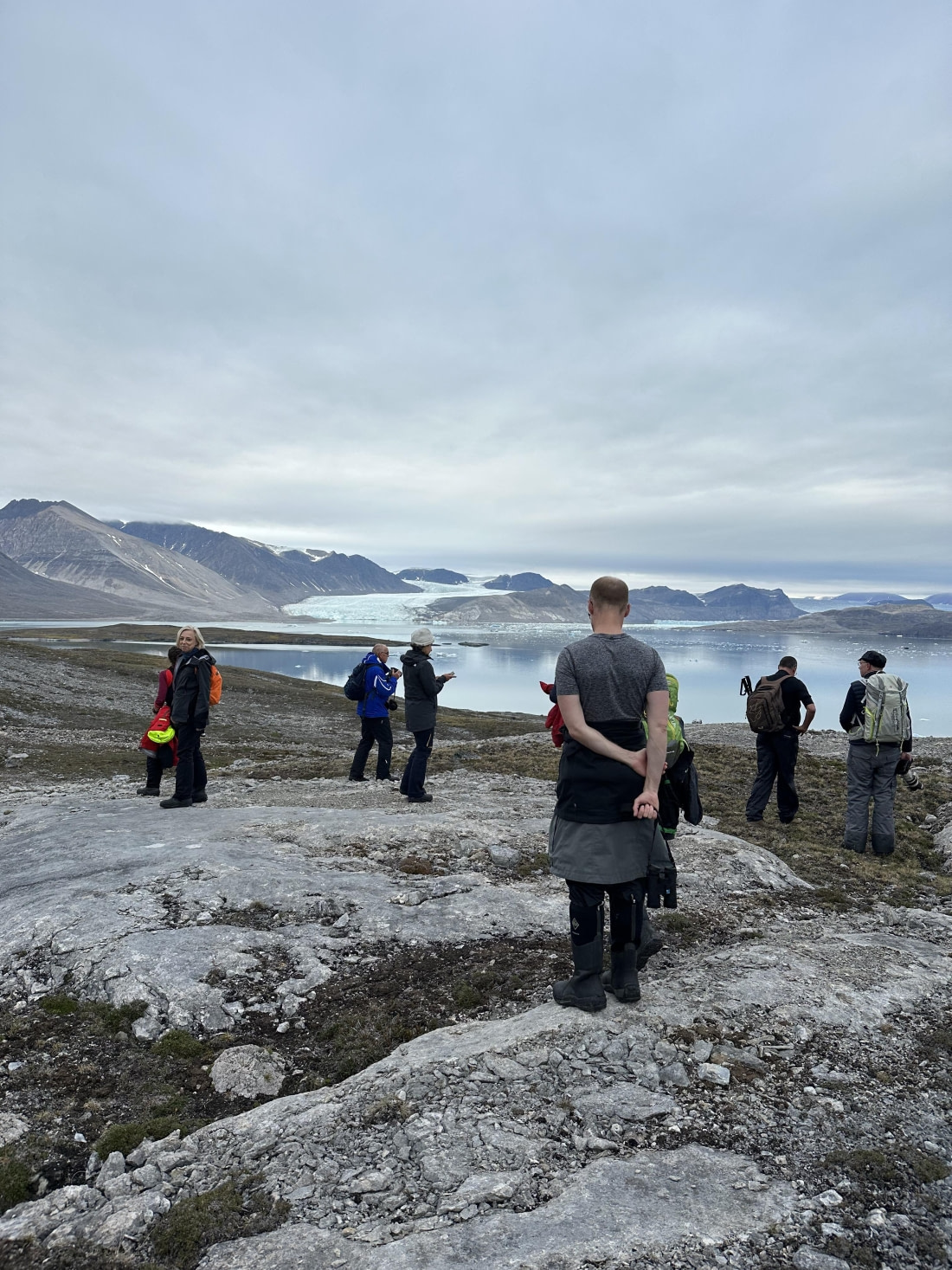| Date: |
16.08.2023 |
| Position: |
79°59.3’N / 030°14.7’E |
| Wind: |
E 4 |
| Weather: |
Fog/rain |
| Air Temperature: |
+3 |
The fog kept us company until the following morning. In addition, the ship was moving in a different way: after the past few days in calm waters, a distinct swell indicated a significant change in weather, and as we looked outside it was grey and quite windy. This did not look promising for the planned morning activities. However, the breakfast was delicious as usual, and we kept our spirits high. At least we could feel that we were at sea now!
Rinie soon confirmed that the present weather conditions were one of many reasons for landings at Svalbard’s easternmost island to be few and irregular (occasional bears and walrus being other such reasons preventing landings). However, he would not quite cancel anything just yet, instead two scout Zodiacs were soon lowered into the water, and those of us who had gotten dressed and ready by now were able to witness the effects of the swell at the gangway first hand.
Looking from the window down to the water below, things had looked a bit wet. But as soon as the drivers approached the gangway to pick up their scout, the proportions of the motion were obvious. The first wave offered an unpleasantly refreshing shower for the AB waiting with the ropes, and once Irene had carefully manoeuvered towards the platform, Rinie performed a quick balancing act in order to time his vertical departure from the gangway with that of the rubber boat. Clearly he had previous experience with this, as the exercise was performed with elegance. Whether we would stand a chance to do the same seemed not equally likely. After Koen and Henrik had managed the same manoeuvre sucessfully, the Zodiacs went off against the wind and towards Kvitøya, and soon disappeared out of sight.
Due to limited soundings, Plancius was not able to approach closer to shore, and we had been warned about this being a long shuttle. However, judging distances had proven tricky. After about half an hour, we were yet again able to spot Irene´s brightly yellow cap somewhere way out there on the water, and another 15 minutes went by until a salt-water-drenched Rinie climbed up the gangway and confirmed our suspicions. This was not the day for a nice Zodiac cruise, and the view on Kvitøya was definitely better from the decks of Plancius than from a bouncing rubber boat.
Instead we continued our travel with fingers crossed for more favourable conditions for the afternoon. Simone offered us some more interesting insight into her research on the sounds of the Arctic as Plancius made way towards the eastern shores of Nordaustland. From time to time, the fog seemed to lift a bit, but the monotonous view on the grey sea was only interrupted by a few harp seals and some minor pieces of glacier ice, reminding ut that somewhere out there was the longest continuous glacier front of the northern hemisphere, some impressive 170 kilometres long.
The next highlight was lunch – Kabir and his galley team had been working their magic again. A good meal is always beneficial for the mood, and today was no exception from that rule. Eventually we were able to distinguish some shapes and conture in the mist. This had to be Austfonna! Upon aproach, we could soon see what seemed like a larger dark brown sandy beach with rocks and boulders in front of the steep ice cliff. Isispynten – and the island Isisøya – were one of only few areas with land along this part of Nordaustland.
Unfortunately for us though, the conditions had not improved, the sea was breaking in impressive waves at the shore, sending sea spray high up against the land. This time, no gangway demonstration was needed. Obviously, we were meant to stay on our ship today and enjoy whatever the view had to offer from the protected safe space of the lounge, preferably with a cup of hot tea or coffee.
Instead of physical activity, an offer was made for the small grey cells: polar bear reproduction and ecology was the topic of today´s lecture, held by Rinie, who had dedicated much of his career to these fascinating creatures and willingly shared his insights with us. As the afternoon passed by, the clouds finally lifted enough to reveal the impressive glacial front of Austfonna.
Carefully, Plancius followed its own previously recorded soundings, and just in time for dinner, a perfect location was found to let the ship stay adrift for the evening. A few walrus passed us curiously, apparently mothers with calves. Every now and then, a calving happened along the ice edge roughly 1.2 nm away, lifting Plancius gently up and down as the waves reached us. Eventually the sun broke through the clouds and illuminated the crevasses and pointed ridges to the south. A day that had started in dull and husky conditions came to an end in an almost enchanting serene atmosphere.
